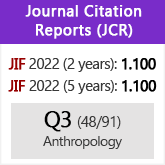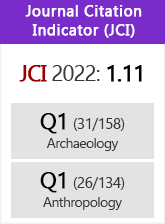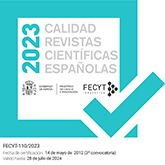Ecological Catastrophes in the steppe? Landscape Archaeology at the mining and metallurgical complex of Kargaly (Region of Orenbourg, Russia)
DOI:
https://doi.org/10.3989/tp.2000.v57.i1.260Keywords:
Environmental Archaeology, Landscape Archaeology, Bronze Age, Eurasia, Mining, Metallurgy, Agriculture, Remote sensingAbstract
Kargaly is one of the most important centers of mining and metallurgy in the great Eurasian steppe. Dr. E.N. Chernykh and his team (Institute of Archaeology, Russian Academy of Sciences, Moscow) and various researchers at the CSIC and other Spanish institutions have developed a joint project to undertake a comprehensive study of the site's two main phases of occupation, the Bronze Age (2nd millenium BC) and the first Russian industrialization (1745-1900 AD). The Russian members of the joint team are in charge of the archaeological investigations, while the Spanish members are studying metallurgical and mining technology and production, on the one hand, and the environmental context and impact of these activities, on the other. This article presents the research design and first results of the Palaeoenvironmental research at Kargaly. This work has two aspects. The first consisted of obtaining one of the most complete palaeoenvironmental data sets from the steppes through both the systematic sampling of archaeological sites to recover charcoal, seeds, fruits and pollen and the taking of palynological cores from natural deposits, on the other Both sampling programs were supported by radiocarbon dates. The second aspect, to which the greater part of this article is devoted, was dedicated to contextualizing the palaeobotanical evidence by studying the present-day landscape, with particular attention to understanding the processes which shape the variability of the pollen rain. Our purpose was to obtain explicit and measurable calibrative criteria which would enable us to answer the palaeoenvironmental questions raised by our archaeological and archaeometallurgical research. These questions include, most importantly, the following: what was the extent of forest (the energy base for the mining/metallurgical complex) during the Bronze Age? and how do we evaluate subsistence practices? (an issue related to the origins of agriculture on the steppe). Answering both questions require us to go beyond conventional palaeoenvironmental practice, since they require very specific information about the past spatial distribution of vegetation on both local and regional scales. We propose a methodological perspective that places the practice of palynology in archaeology within the goals, theoretical premisses, and methods of Landscape Archaeology. Using this framework we evaluate and identify the limitation of conventional palaeoenvironmental practice (particularly the use of pollen analysis in archaeology) and we develop an intensive application of model-based approach to palynology, one that combines study of the pollen rain with mathematical modelling of the landscape. To put it into practice we used modern methods of terrestrial observation, such as satellite imagery, grounded in the use of Geo graphical Information Systems (GIS) and global positioning (GPS) technology.
Downloads
Download data is not yet available.
Downloads
Published
2000-06-30
How to Cite
Vicent García, J. M., Rodríguez Alcalde, Ángel L., López Sáez, J. A., de Zavala Morencos, I., López García, P., & Martínez Navarrete, M. I. (2000). Ecological Catastrophes in the steppe? Landscape Archaeology at the mining and metallurgical complex of Kargaly (Region of Orenbourg, Russia). Trabajos De Prehistoria, 57(1), 29–74. https://doi.org/10.3989/tp.2000.v57.i1.260
Issue
Section
Articles
License
Copyright (c) 2000 Consejo Superior de Investigaciones Científicas (CSIC)

This work is licensed under a Creative Commons Attribution 4.0 International License.
© CSIC. Manuscripts published in both the printed and online versions of this Journal are the property of Consejo Superior de Investigaciones Científicas, and quoting this source is a requirement for any partial or full reproduction.All contents of this electronic edition, except where otherwise noted, are distributed under a “Creative Commons Attribution 4.0 International” (CC BY 4.0) License. You may read here the basic information and the legal text of the license. The indication of the CC BY 4.0 License must be expressly stated in this way when necessary.
Self-archiving in repositories, personal webpages or similar, of any version other than the published by the Editor, is not allowed.
















